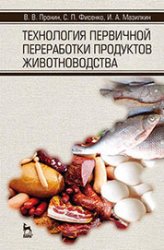 Название: Model Predictive Control for Doubly-Fed Induction Generators and Three-Phase Power Converters
Название: Model Predictive Control for Doubly-Fed Induction Generators and Three-Phase Power ConvertersАвтор: Alfeu J. Sguarezi Filho
Издательство: Elsevier
Год: 2022
Страниц: 246
Язык: английский
Формат: pdf (true)
Размер: 15.0 MB
Model Predictive Control for Doubly-Fed Induction Generators and Three-Phase Power Converters describes the application of model predictive control techniques with modulator and finite control sets to squirrel cage induction motor and in doubly-fed induction generators using field orientation control techniques as both current control and direct power control. Sections discuss induction machines, their key modulation techniques, introduce the utility of model predictive control, review core concepts of vector control, direct torque control, and direct power control alongside novel approaches of MPC. Mathematical modeling of cited systems, MPC theory, their applications, MPC design and simulation in MATLAB are also considered in-depth.
The evolution of power semiconductor components permitted processing power at levels of thousands of volts and ampers. In this context, several power electronics devices built with arrangements of these semiconductor elements enabled the conversion of energy from AC–AC, with different frequencies and amplitudes, DC–AC, AC–DC, and DC–AC. Thus, it was possible to make the different ways of using electric energy more flexible and, consequently, to diversify the ways of its application. Finally, the evolution of power semiconductors, the increase in the processing and storage capacity of processors and their peripherals, respectively, enabled greater flexibility in the implementation of more complex control algorithms.
One application of power electronics is in renewable energy such as wind, small hydroelectric plants, or in electrical energy storage systems, among others. This type of application is important due to the growing demand for energy in developed and developing countries, and in the search for alternative energy sources rather than using fossil fuels. In this case, power electronics can be used to process energy from electric generators or to process energy present in the energy storage systems.
Among the generators employed in the renewable energy, the doubly-fed induction generator (DFIG) has become popular. This type of generator emerged as an alternative to permanent magnets synchronous generators, due to its low cost and robustness. The ordinary configuration of DFIG employed in renewable energy systems has its stator connected directly to the grid and its rotor connected to the grid through a bidirectional converter, which processes a maximum of 30% of the total power of the generator. In this way, it decreases the cost of the system. The bidirectional converter, called back-to-back converter, is an arrangement of two electronic power converters that have AC input/output and share the same DC link. It is possible to notice the basic structure of the grid and rotor side converters control using the measurements of current, torque, power or speed of the generator, or using the measurements of current, voltage or power of the grid.
The work concludes by addressing implementation considerations, including generator operation under voltage sags or distorted voltage and inverters connected to the grid operating under distorted voltage. Experimental results are presented in full.
Скачать Model Predictive Control for Doubly-Fed Induction Generators and Three-Phase Power Converters
[related-news] [/related-news]
Комментарии 0
Комментариев пока нет. Стань первым!















